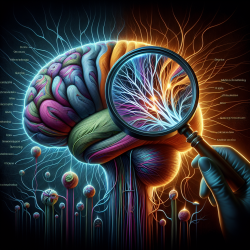Understanding ADHD through Multimodal MRI Analysis
Attention-Deficit/Hyperactivity Disorder (ADHD) is a complex neurodevelopmental disorder characterized by persistent patterns of inattention, hyperactivity, and impulsivity. Recent research, such as the study titled Integrated analysis of gray and white matter alterations in attention-deficit/hyperactivity disorder, highlights the potential of using multimodal MRI analysis to deepen our understanding of ADHD's underlying neural mechanisms.
Key Findings from the Research
The study conducted a comprehensive analysis of gray and white matter alterations in individuals with ADHD using multimodal MRI techniques. This approach allowed researchers to identify shared pathophysiological processes across different brain structures, offering a more integrated view than traditional unimodal analyses.
- Prefrontal Cortex Abnormalities: The study found that individuals with ADHD exhibited smaller prefrontal volumes, which correlated with increased symptom severity. This aligns with previous findings that highlight the role of the prefrontal cortex in attentional processing and executive functions.
- Orbitofrontal and Insula Involvement: Decreased volumes in the orbitofrontal cortex and insula were also observed, suggesting these areas are implicated in the emotional and cognitive aspects of ADHD.
- Multimodal Sensitivity: By integrating data from multiple MRI modalities, the study increased sensitivity to variations between participants, revealing consistent patterns of brain structure abnormalities that were not as evident in unimodal studies.
Implications for Practitioners
For practitioners working with ADHD, these findings underscore the importance of considering the brain's structural complexity when designing interventions. Here are some ways to apply these insights:
- Holistic Assessment: Utilize comprehensive assessments that consider both gray and white matter changes to better understand the individual needs of each student with ADHD.
- Targeted Interventions: Develop interventions that specifically target the prefrontal and orbitofrontal cortices, as these areas are crucial for attention and emotional regulation.
- Encourage Further Research: Stay informed about ongoing research in multimodal MRI analyses to continually refine therapeutic approaches and improve outcomes for students with ADHD.
Conclusion
Multimodal MRI analysis offers a promising avenue for unraveling the complex neural underpinnings of ADHD. By integrating findings across different brain modalities, practitioners can gain a more comprehensive understanding of the disorder, leading to more effective and individualized interventions. To read the original research paper, please follow this link: Integrated analysis of gray and white matter alterations in attention-deficit/hyperactivity disorder.










